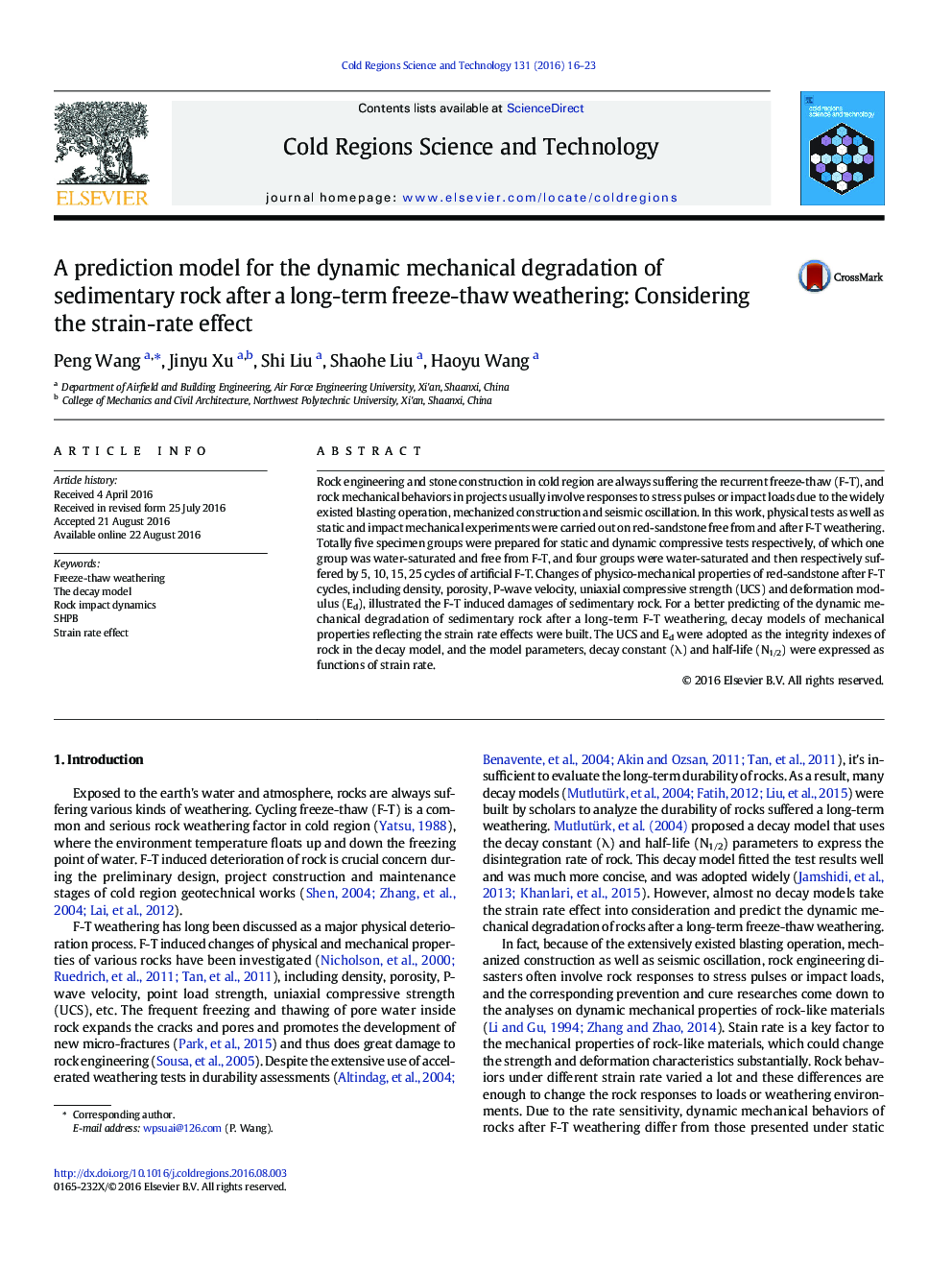| کد مقاله | کد نشریه | سال انتشار | مقاله انگلیسی | نسخه تمام متن |
|---|---|---|---|---|
| 4675583 | 1634433 | 2016 | 8 صفحه PDF | دانلود رایگان |
• SHPB impact test is applied on rock fresh or after different freeze-thaw/F-T cycles.
• F-T induced decay of rock is studied from changes of physico-mechanical properties.
• Effects of F-T and strain rate on rock dynamic mechanical properties are analyzed.
• Decay model reflecting strain rate is built to predict the long-term degradation.
• Changing rules of model parameters, λ and N1/2, versus strain rate are studied.
Rock engineering and stone construction in cold region are always suffering the recurrent freeze-thaw (F-T), and rock mechanical behaviors in projects usually involve responses to stress pulses or impact loads due to the widely existed blasting operation, mechanized construction and seismic oscillation. In this work, physical tests as well as static and impact mechanical experiments were carried out on red-sandstone free from and after F-T weathering. Totally five specimen groups were prepared for static and dynamic compressive tests respectively, of which one group was water-saturated and free from F-T, and four groups were water-saturated and then respectively suffered by 5, 10, 15, 25 cycles of artificial F-T. Changes of physico-mechanical properties of red-sandstone after F-T cycles, including density, porosity, P-wave velocity, uniaxial compressive strength (UCS) and deformation modulus (Ed), illustrated the F-T induced damages of sedimentary rock. For a better predicting of the dynamic mechanical degradation of sedimentary rock after a long-term F-T weathering, decay models of mechanical properties reflecting the strain rate effects were built. The UCS and Ed were adopted as the integrity indexes of rock in the decay model, and the model parameters, decay constant (λ) and half-life (N1/2) were expressed as functions of strain rate.
Journal: Cold Regions Science and Technology - Volume 131, November 2016, Pages 16–23
